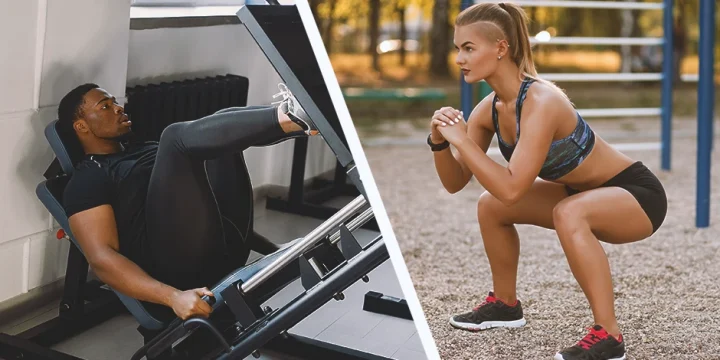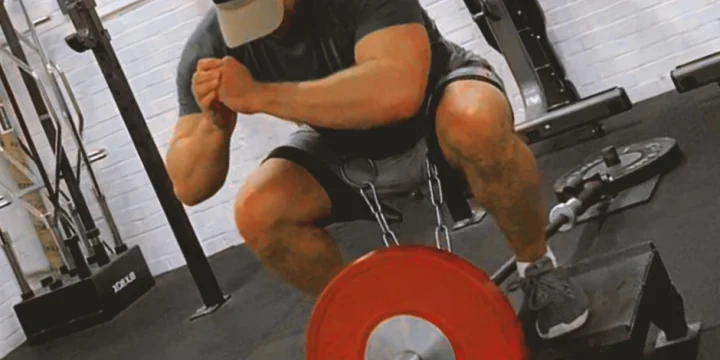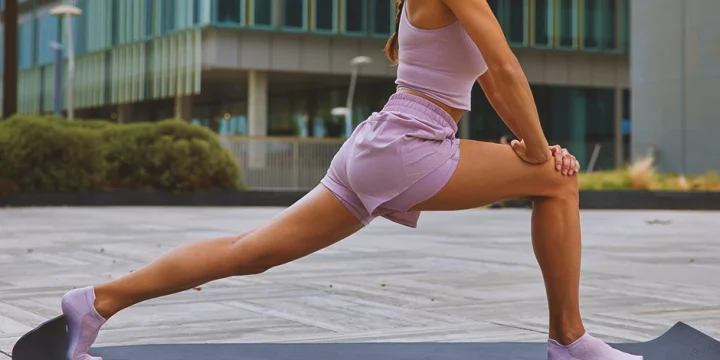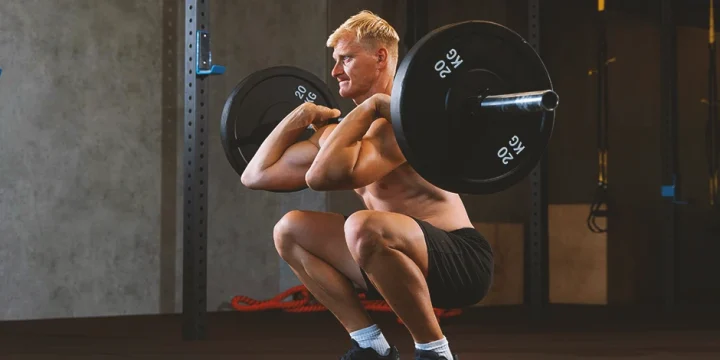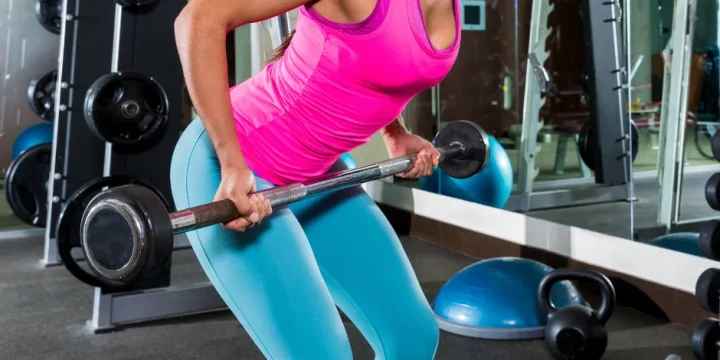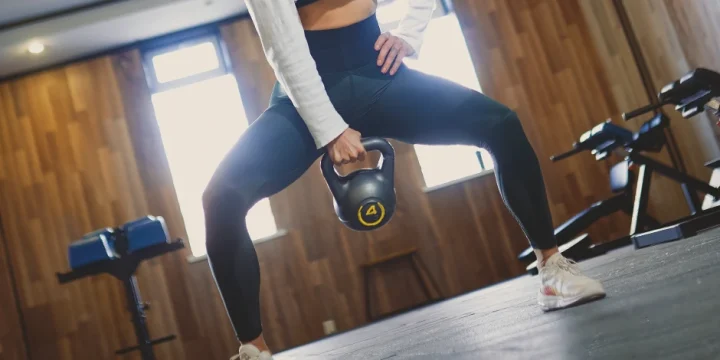Heavy squats are a part of every serious weightlifting program, and using the squat belt is essential for ensuring stability and safety during those lifts.
However, you may dislike belt squatting because it negates the development of the same muscles used when the belt is off, and you perform the squats without the belt.
After a long 23-hour research, and based on my experience as a certified personal trainer, I singled out the best traditional belt squat alternatives that will allow you to build strength more holistically and avoid getting injured.
After reading the article, you will know both specific and non-specific belt squat alternatives and their benefits.
Quick Summary
- The best belt squat alternatives include dumbbell belt squats, belt squat machine squats, squat goblet squats, front squats, safety squat bar squats, cable hip belt squats, and landmine belt squats.
- A great belt squat alternative often uses belt squat machines that take a sufficient load from your lumbar spine and allow you to lift more weight.
- According to the European Journal of Applied Physiology, progressive overload is a great way to strengthen your leg muscles.
- If you want to teach your body to develop intra-abdominal pressure when lifting heavy, you must avoid using a dip belt because it will achieve the same effect without you doing anything.
4 Specific Belt Squat Alternatives

Here are the best specific weightlifting belt squat alternatives to take the load from your lower back and teach your body to lift more weight than the traditional barbell back squat.
"The belt squat is a squat accessory exercise that reduces the level of spinal loading and compression compared with a traditional barbell back squat. However, a belt squat machine is an expensive piece of equipment and not many gyms fork out the cash to pay for one. It’s more of a luxury purchase for gyms rather than an all-out necessity."
- Avi Silverberg, Certified Personal Trainer & Powerlifter
1. Plate or Dumbell Belt Squat
Plate or dumbbell belt squat is an excellent barbell back squat alternative, allowing you to perform the same squatting pattern as normal back squats.
It works the same muscles as regular squats but will take a sufficient load from your lumbar spine and help you avoid injuries.
How to Perform Plate or Dumbbell Belt Squats
- Pick a plate of appropriate weight to perform at least eight reps without resting.
- Connect the belt and weight plate with the chains and let the plate hang between your legs.
- Place two steppers or small plyo boxes in front and place your foot on each. The boxes must be high enough so the weight plate doesn’t touch the floor in the deep squat position.
- Take a squat stance, shoulder-width apart, and point your toes slightly outward. Ensure your toes are in line with your knees during the squatting movement.
- Start the exercise by bending your hips, knees, and ankles to move to the bottom of the squat.
- Hold that position for one second when your thighs become parallel to the ground.
- Reverse the motion to return to the starting position.
- Repeat for 8 reps, 4 sets, and rest for 3 minutes between the sets.
2. Banded Belt Squat
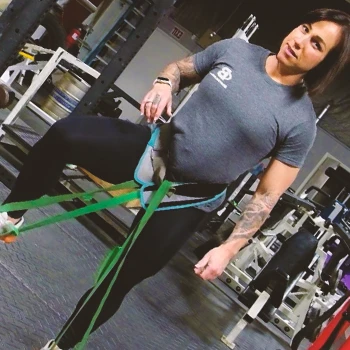
Banded belt squats are great alternatives that require minimal equipment and can be easily progressed with the higher-resistance band.
According to the European Journal of Applied Physiology, progressive overload is a great way to strengthen your leg muscles [1].
How to Perform Banded Belt Squats
- Pick a top resistance band that will allow you to perform at least 8 reps of banded belt squats.
- Place the resistance band in front of your body on the floor and slightly open it.
- Place your right foot on the right side of the band and your left foot on the left side of the band.
- Pick the middle of the band and pull it towards your weight belt.
- Attach the resistance band to the belt and ensure enough tension throughout the range of motion.
- Start the exercise by lowering your body and bending your hips, knees, and ankles.
- Hold that position for one second when your thighs become parallel to the ground.
- Reverse the motion to return to the starting position where the band is tightened.
- Repeat for 8 reps, 4 sets, and rest for 2 minutes between the sets.
3. Landmine Belt Squat
A landmine belt squat is another excellent variation that will enable you to lift heavy and doesn’t overload your lower back with unnecessary weight.
How to Perform Landmine Belt Squats
- Load the landmine bar with the appropriate weight to perform at least 6 consecutive reps without rest.
- Take a chain and connect the landmine with your belt so you can perform the whole range of motion during squatting without interruption.
- Step in the landmine so it is located between your legs.
- Start the exercise by descending into the bottom of the squat by bending your hips, knees, and ankles.
- Hold that position for one second when your thighs become parallel to the ground.
- Reverse the motion by extending your ankles, knees, and hips to return to the starting position.
- Repeat for 6 reps, 4 sets, and rest 2-5 minutes between each set.
Related Article: Landmine Exercises
4. Cable Hip Belt Squat

Cable hip belt squats will effectively target your quads, glutes, and hamstrings and ensure maximal hypertrophy in the rest of your leg muscles [2].
How to Perform Cable Hip Belt Squats
- Load the cable machine with sufficient weight to perform at least 6 reps without resting.
- Connect the cable with the belt and ensure you can perform the whole range of motion without interruption.
- The cable and the belt can be connected with chains or other fitness equipment.
- Start the exercise by lowering your body towards the floor by simultaneously bending your hips, knees, and ankles.
- Hold that position for one second when your thighs become parallel to the ground.
- Reverse the motion by performing the triple extension to return to the starting position.
- Repeat for 6 reps, 4 sets, and rest for as much as needed between the sets.
5 Non-specific Belt Squat Alternatives

Here are the non-specific belt squat alternatives you can incorporate today to diversify your leg workouts.
"The belt squat is a great movement to teach proper vertical upright positioning in the squat while simultaneously adding high amounts of quadriceps hypertrophy. Additionally, this is a good movement for lifters who suffer from lower back pain or who want to limit the amount of loading (important during higher volume training phases) from loading the bar on the back."
- Mike Dewar, Certified Personal Trainer
1. Front Squats
Front squats are the best squat alternative for hitting quadriceps muscles due to the weight shift and barbell placement.
However, you must be careful not to overtrain your quads and enter the overtraining syndrome. Research from Sports Health suggests that this can hinder your progress and evoke negative effects [3].
How to Perform Front Squats
- Place the barbell on the squat rack and load it with the appropriate weight so you can perform 10 consecutive reps without resting.
- Unrack the barbell on your shoulders in the front squat position. Take two steps back to have the space to perform the exercise.
- Assume a standing position with your feet a little wider than shoulder-width apart.
- Start the exercise by descending to the deep squat position until your thighs are parallel to the ground.
- When you reach the bottom position, reverse the motion to return to the standing position.
- Repeat for 10 reps, 3 sets, and rest for 3 minutes between the sets.
2. Safety Bar Squats
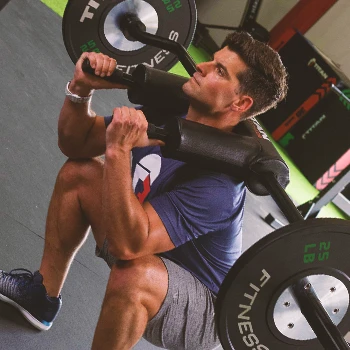
Safety squat bars are the safest option if you still want to squat heavy but avoid injuries [4].
How to Perform Safety Squat Bars
- Load the safety squat bar with the appropriate weight to perform 8 reps without resting.
- Place the safety bar on your upper back, unrack it, and take a step back to have enough space for the exercise.
- Assume a standing position with your feet a little wider than shoulder-width apart, and ensure your toes follow the line of your knees.
- Start the exercise by bending your ankles, knees, and hips simultaneously until your thighs parallel the ground.
- Hold that position for one second when your thighs become parallel to the ground.
- Reverse the motion to return to the starting position.
- Repeat for 8 reps, 3 sets, and rest for 3 minutes between the sets.
3. Goblet Squat
Goblet squats can be performed with kettlebells and dumbbells and are an excellent alternative if you are just starting or don’t want to lift heavy.
How to Perform Goblet Squats
- Pick a dumbbell of appropriate weight so you can perform at least 12 reps without resting.
- Assume a standing position where your feet are a little wider than your hips, and your toes follow the line of your knees.
- Place the dumbbell in the goblet position at the level of your upper chest and shoulders.
- Start the exercise by bending your hips, knees, and ankles to lower your body toward the floor.
- When your thighs parallel the ground, reverse the motion to return to the standing starting position.
- Repeat for 12 reps, 4 sets, and rest for 90 seconds between the sets.
4. Hack Squat
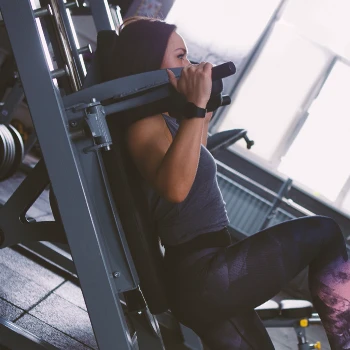
Hack squatting is another excellent alternative that can help you accomplish the goal of lifting heavy and provide you sufficient balance to perform the exercise.
How to Perform Hack Squats
- Load the hack squat machine with sufficient weight to perform at least 8 reps without resting.
- Stand/lie on the hack squat machine, assuming the starting position of the hack squat exercise.
- Start the exercise by flexing your hips, knees, and ankles to enter the deep hack squat position.
- Hold that position for one second when your inner thighs become parallel to the surface below your feet.
- Reverse the motion to return to the starting position.
- Repeat for 8 reps, 4 sets, and rest for 3 minutes between the sets.
5. Leg Press
The leg press is similar to the hack squat but features a different starting position, making it a less functional squat variation.
How to Perform Leg Presses
- Load the leg press machine with the appropriate weight to perform 10 consecutive reps without resting.
- Lie on the machine, place your feet shoulder-width apart, and ensure your toes follow the line of your knees.
- Start the exercise by removing the safety mechanism that holds the weight.
- Bend your knees and hips until your hips pass a little bit more than 90 degrees.
- Hold that position for one second, then reverse the motion by extending your hips and knees to return to the starting position.
- Repeat for 10 reps, 4 sets, and rest for 90 seconds between the sets.
Belt Squat Benefits

Here are the most notable belt squat benefits I've observed over the years.
1. Increases Lower Body Muscle Mass
Belt squats are excellent for inducing hypertrophy and muscle-building effects because you can lift more weight.
The belt will build the intra-abdominal pressure instead of you and allow more weight to be lifted.
This comes in handy when lifting a submaximal load with a proper rest period, which is the best for hypertrophy development.
2. Reduces Spinal Compression and Loading
The best part about belt squats and belt squat alternatives is the ability to reduce the stress on the lower back during the squatting.
This is extremely important for people who constantly lift heavy and are under a bigger chance of injury.
You can significantly reduce the injury of your lower back and even lift more heavyweight and crush your records due to added intra-abdominal pressure.
3. Reduces Elbow and Wrist Extension

This is especially true for all the barbell belt back squat alternatives.
You won’t have to be in a compromised position with your wrist grip since the alternative will provide the load below your waist, making the grip unnecessary.
If you have wrist problems, implementing belt squat alternatives is the best way to keep progress and avoid injuries.
4. Increases Lower Body Training Without Causing Excess Fatigue
Excess fatigue usually manifests in the lower back muscles, tendons, and ligaments.
However, this is all gone if you perform belt squat alternatives that don’t include the weight put above the level of your lumbar spine.
Also, you will only exercise the muscles you want to increase the size and allow other upper body muscles that act as stabilizers to rest and recover for the following session.
5. A Stepping Stone to Increasing Squat Frequency
You can easily increase the squat frequency if you use the belt regularly.
This is because most lifters avoid increasing their squat frequency due to being afraid of placing too much pressure on the lower back.
The belt is an ideal solution to get your squatting game to the next level by increasing the total workout weekly volume.
Specific Benefits for Different Athletes Using Belt Squat Alternatives
1. Benefits for Runners and Endurance Athletes: Goblet Squats
Goblet squats, involving holding a weight close to the chest, promote an upright posture and deep squatting, which is excellent for building lower body strength without overloading the spine. This exercise helps in developing strong quads and glutes, which are crucial for runners.
The upright posture in goblet squats also aids in better lung capacity and breathing techniques, beneficial for endurance athletes.
2. Advantages for Weightlifters: Front Squats
Front squats, where the weight is held in front of the body, shift the load to the anterior muscles, particularly the quads and core. This is excellent for weightlifters who require strong quads for lifting heavy weights.
The front squat encourages a more upright torso, which can help in reducing stress and pressure on the lower back — a common issue in weightlifting.
3. For Bodybuilders: Hack Squats
Hack squats, performed on a machine, allow deep squatting with less spinal loading. This is ideal for bodybuilders focusing on muscle hypertrophy as it enables working out with heavy weights while minimizing injury risk.
The machine's biomechanics allow bodybuilders to target specific muscle groups like quads or glutes more effectively, which is essential for sculpting.
4. For Rehabilitating Athletes: Landmine Belt Squats
The landmine belt squat allows for a natural movement pattern with no tension on the upper or lower back muscles, making it ideal for athletes in rehabilitation, especially those recovering from back injuries.
This exercise can be easily set up with minimal equipment, making it accessible for athletes who may not have access to a full gym during their recovery period.
5. For CrossFit and Functional Fitness Enthusiasts: Banded Belt Squats
Banded belt squats require minimal equipment and are excellent for functional fitness enthusiasts. The resistance band provides a unique resistance profile that can help improve strength through a full range of motion.
The versatility of bands allows for easy adjustment of resistance, making them suitable for various fitness levels and functional training routines.
FAQs
Are Belt Squats as Good as Squats?
Yes, belt squats are as good as squats. However, doing a regular barbell squat without a belt forces your abdominal and core muscles to work synergistically and stabilize the lumbar spine.
Can I Squat 225 Without a Belt?
If you can squat 225 without a belt depends on your current fitness level, history of injuries, and technique. If you are unsure whether you can lift 225 without compromising your spine, take a belt and use it since that is the only way to avoid injuries.
Do Belt Squats Build Mass?
Yes, belt squats build mass. However, building muscles has very little to do with the actual equipment, most of it due to programming principles, nutrition, and exercise selection.
References:
- https://www.ncbi.nlm.nih.gov/pmc/articles/PMC4215195/
- https://www.ncbi.nlm.nih.gov/pmc/articles/PMC6950543/
- https://www.ncbi.nlm.nih.gov/pmc/articles/PMC3435910/
- https://pubmed.ncbi.nlm.nih.gov/32032231/
About The Author
You May Also Like
